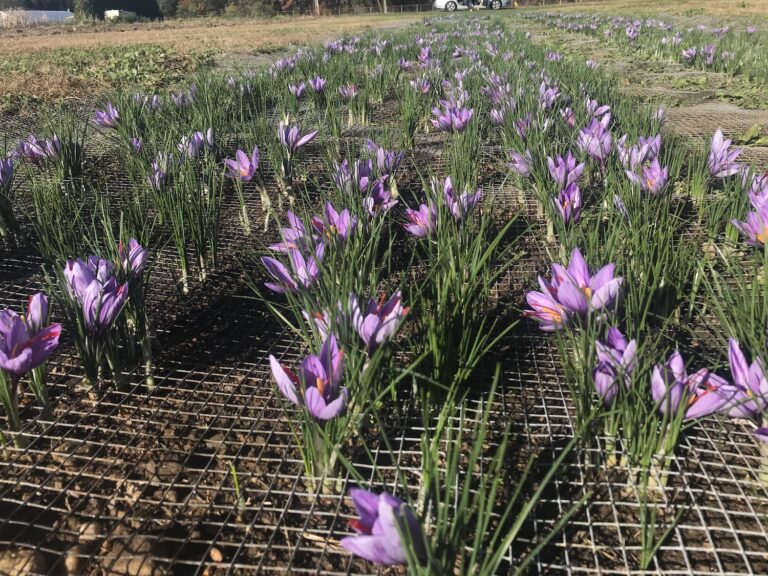Growing saffron at home might sound complicated, but it’s actually pretty simple—and you don’t need a garden to do it. With the right setup and timing, you can grow your own saffron in containers right on your balcony, patio, or windowsill.
Saffron comes from the Crocus sativus flower, and each bloom gives you just three red stigmas—the actual saffron threads. It’s one of the most valuable spices in the world, and growing your own makes every harvest feel like gold.
Choosing the right container
Use a pot that’s at least 6 inches deep with good drainage holes. Clay or terracotta pots are ideal because they help the soil dry evenly and prevent rot. Each pot should be wide enough to space out multiple bulbs.
Prepping your soil
Saffron needs well-draining soil. Mix two parts quality potting soil with one part coarse sand or perlite. The goal is to avoid soggy roots while giving the corms enough nutrients and airflow.
When and how to plant
Plant saffron corms in late summer or early fall. Set them pointy end up, about 4 inches deep, and space them 3 inches apart. This gives them room to breathe and develop strong roots.
Where to place your containers
Put your pots in a spot that gets 6 to 8 hours of full sun every day. If you live in a hot climate, a little afternoon shade helps prevent overheating. Indoors near a bright window or outside on a sunny patio both work great.
Watering and feeding
Water just enough to keep the soil lightly moist. Don’t overwater—soggy soil can cause bulb rot. Once green shoots appear, keep watering when the top inch of soil feels dry. At the beginning of the season, you can feed with a mild, balanced fertilizer to help fuel growth.
When and how to harvest
Flowers bloom for only a couple of weeks in the fall. Check your plants daily, and as soon as a flower opens, pluck the three red stigmas using tweezers. Dry the threads gently on a paper towel and store them in an airtight jar away from light.
After the bloom
After flowering, the leaves will keep growing for a few months and then turn yellow. That’s your sign the plant is going dormant. Cut back on watering and let the corms rest. If winters get harsh in your area, bring the pots indoors or move them to a sheltered spot.
Every year or two, dig up the corms, separate the smaller ones, and replant them with fresh soil. This keeps the plants productive and prevents overcrowding.
Saffron might be one of the world’s rarest spices, but that doesn’t mean it’s out of reach. With a few pots, good soil, and some patience, you can grow your own stash of homegrown saffron right at home.
